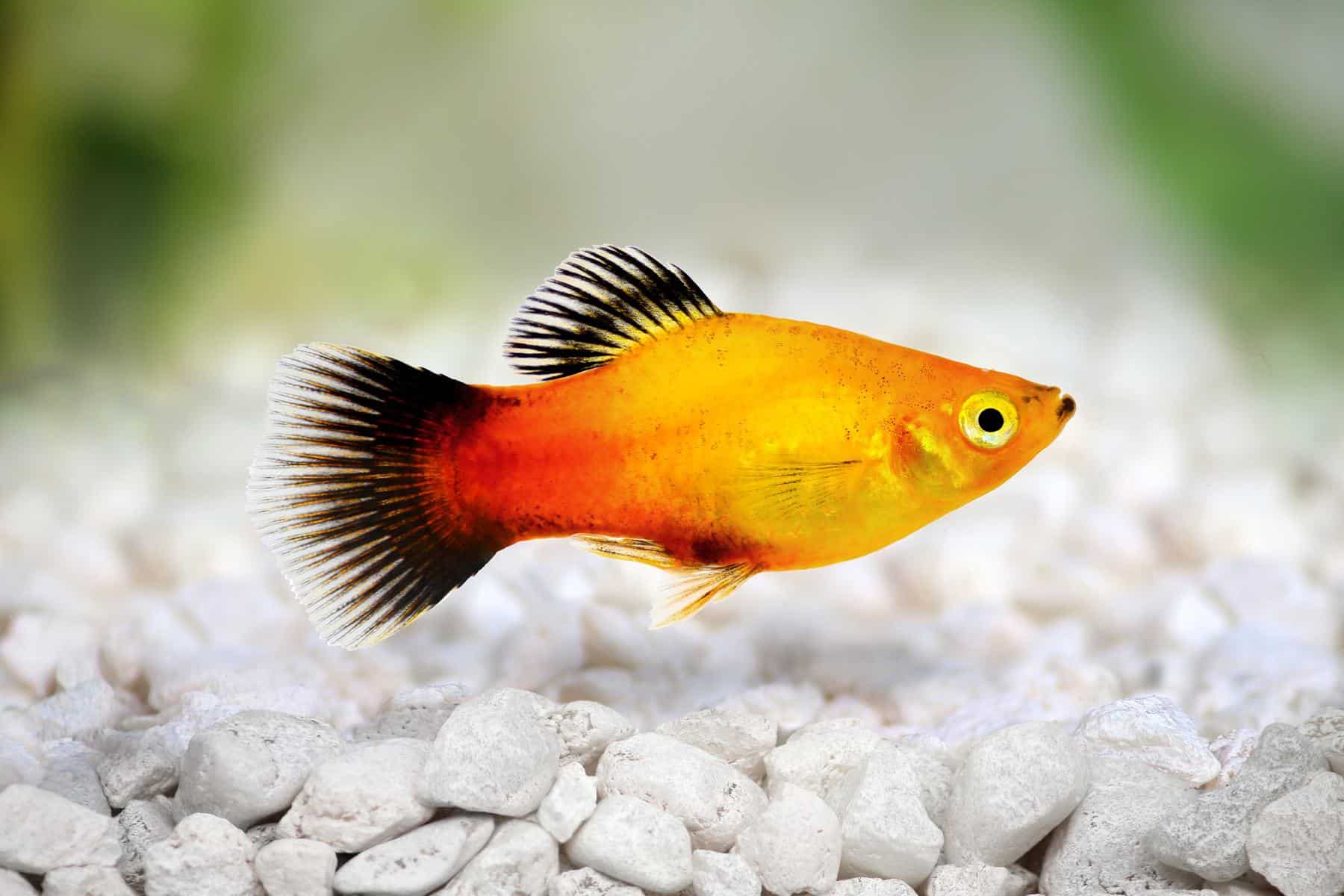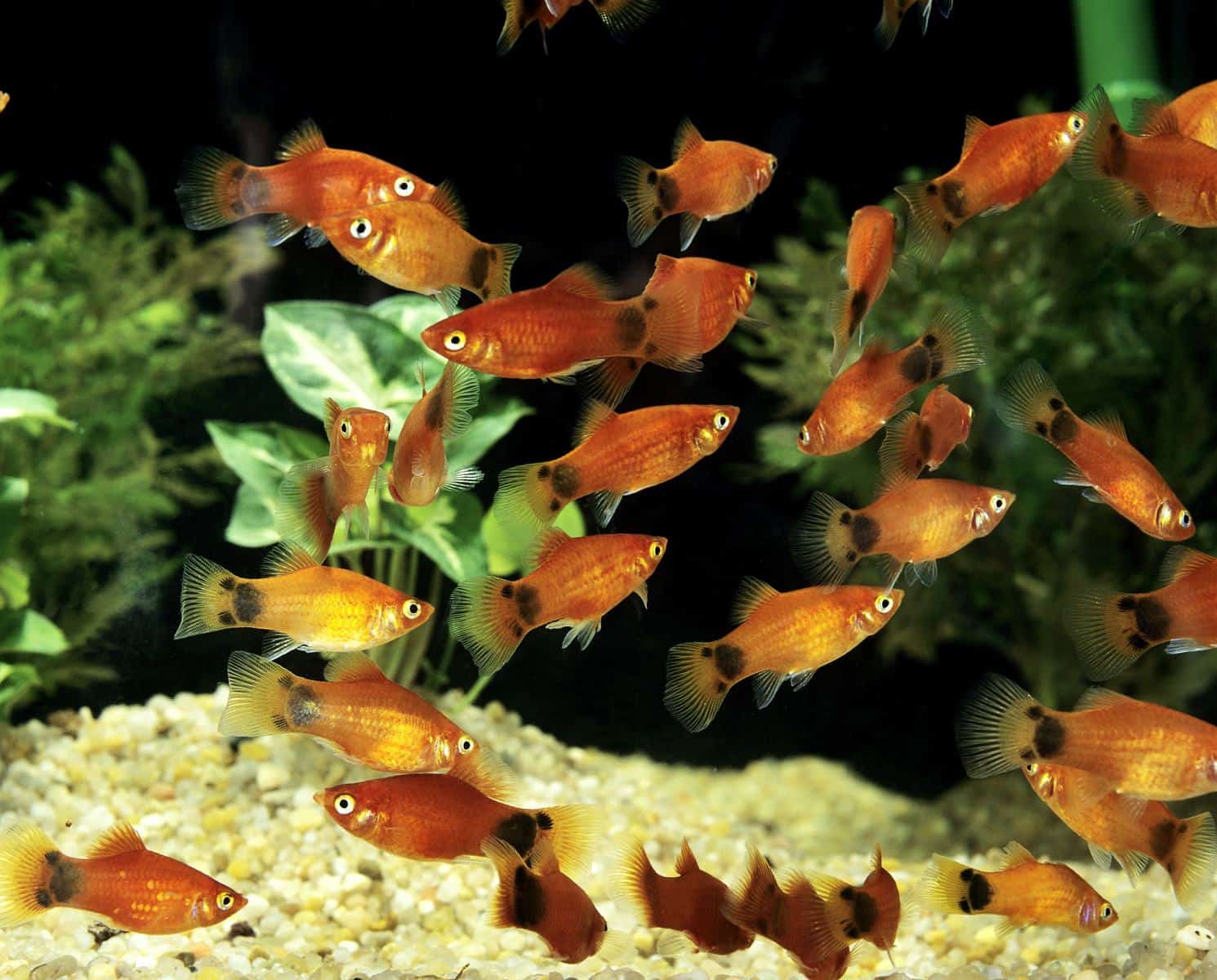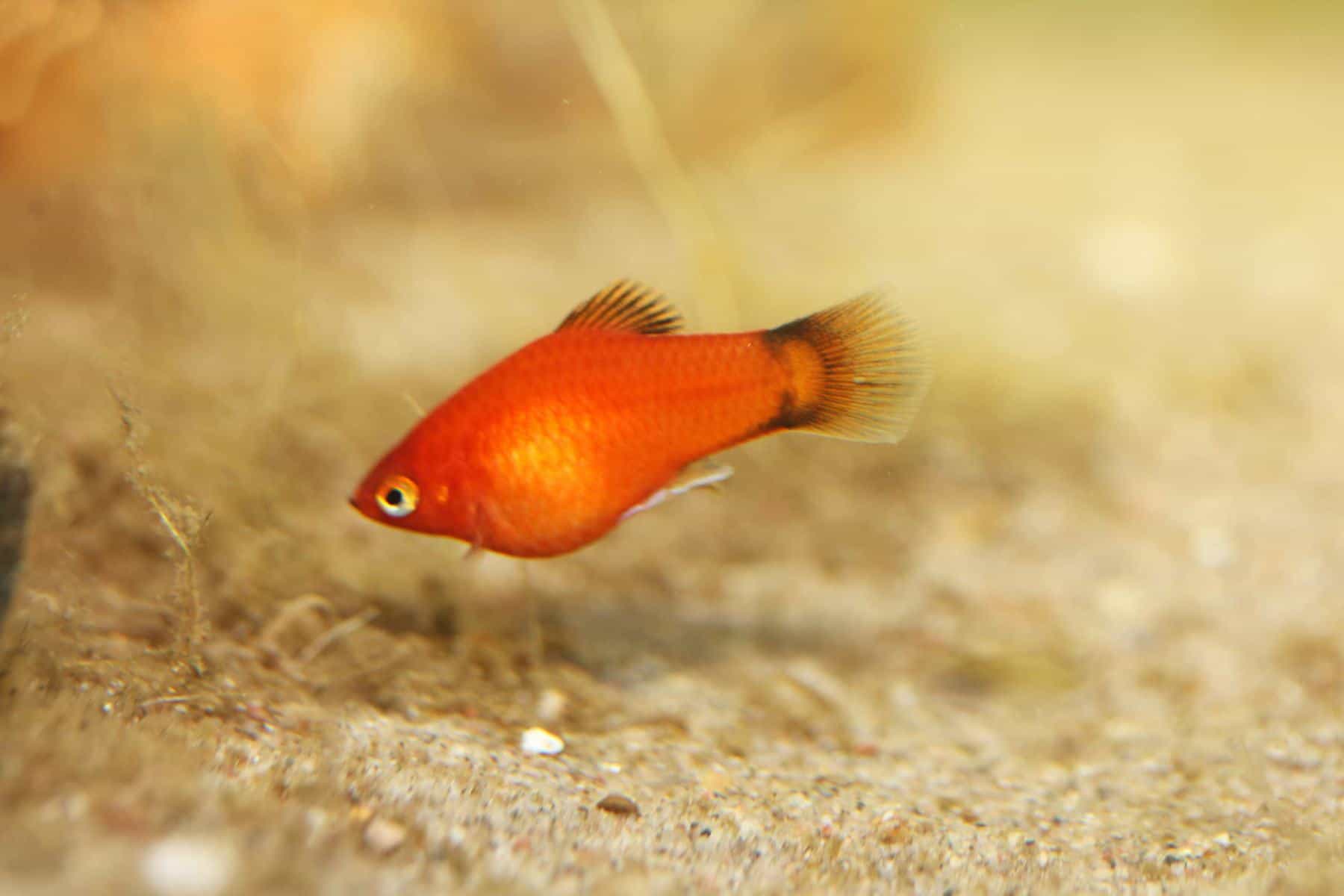[ad_1]
Platy fish are probably one of the most recognizable freshwater community fish in the hobby, but did you know that there are several species and colors of this fish? In general, all species of Xiphophorus are extremely easy to keep and a favorite for hobbyists that are just starting to breed freshwater fish. This article will specifically discuss care requirements for the southern play fish (Xiphophorus maculatus).
Keep reading to find out everything you need to know about the different species and colors of platy fish available and how to keep one in your own freshwater aquarium!
Name
Xiphophorus includes about 30 different species of fish that can be found throughout Mexico and many northern regions of Central America. These fish are often referred to as platies or swordtails.
Within Xiphophorus, there are three main aquarium species: the southern platy fish (Xiphophorus maculatus; also known as moonfish), the swordtail platy fish (Xiphophorus helleri), and the variatus platy fish (Xiphophorus variatus).
Identification
The southern platy fish is probably the most common freshwater fish you’re likely to come across at your local pet store; these fish lack the notably elongated caudal fin found in swordtail platies, but have very similar body shapes and come in a lot of the same colors.
Instead, the southern platy is a small fish with short fins and a fan-shaped tail. They often have a balloon-like stomach that becomes especially noticeable when females are bearing fry. These fish have been bred in the aquarium hobby to exhibit most colors, like yellow, orange, and red, which have even come to have their own names.
How big do platies get?
Adult southern platy fish get to be about 2.0-2.5 inches (5.1-6.4 cm) long when fully grown; male platies tend to grow slightly smaller than females.
On average, these platies will live for about 3 years, though some hobbyists have had success keeping them up to 5 years!
Platy fish colors
The southern platy has been bred in the aquarium hobby to enhance finnage as well as colors and patterns. As a result, these peaceful fish can be found in a variety of shapes and sizes, all of which have been given a certain brand name.
Each coloration/pattern has most likely been tried with another coloration, making overlapping designs. Keep in mind that each designer fish may have variations in color and that no two fish are alike!
Sunburst platy

Probably one of the more attractive freshwater fish, the sunburst platy is a beautiful blend of yellows, oranges, and sometimes blacks if the fish is a wag variety. These fish have a bright yellow midsection that fades into a warm orange around the front of their face and towards the caudal fin; for true a sunburst platy, this orange will continue onto the caudal fin.
If the fish is a sunburst wag platy, then the caudal fin, dorsal fin, anal fin, and sometimes the pelvic fins will be a silky black that makes for a stark contrast against the lighter colors.
Mickey mouse platy
The mickey mouse platy is named after the black markings near the tail that resemble the famous character’s silhouette. The most common colors of mickey mouse platies are yellows, oranges, reds, and blues. This mickey mouse pattern may also be found on other colorations, like sunburst platies.
Wag platy
A wag platy will have black caudal, anal, dorsal, and sometimes pelvic fins. These fish most commonly come in a two-tone red wag variety, but other more specialized colors, like sunburst and metallic blue, are also seen.
Natural habitat
Xiphophorus maculatus is native to many areas throughout much of Mexico and the rest of Central America. They can usually be found in slow-moving warm springs, canals, swamps, and creeks that are rich in vegetation.
Because of their popularity in the aquarium hobby, these tropical fish have been introduced to several other parts of the world and can be found in the natural systems of many countries. While they have not had too much impact yet, some regions have reported adverse effects.
Platy fish tank requirements
The simple care level and attractive colors of southern platies are what make them such a popular beginner species. While these peaceful fish are perfect for beginners, it can sometimes be easy to get carried away and end up with too many, especially after they start to give birth in your tank!
Platies need at least a 10 gallon (37.9 L) tank as adult fish can be pretty active; these fish mostly stay at the top and the middle of the water column, so it’s best to provide as much open water space to swim as possible while still providing plants and other decorations for fry to hide. These fish can be kept on either a sand or gravel substrate, but their colors tend to look best on darker backdrops.
Southern platies are largely kept as tropical freshwater fish and usually require a heater to keep the water temperature at a steady value between 65-77° F (18.3-25.0°C); if planning to keep platies in a cooler aquarium setup, then it is still recommended to have a heater in order to have more control over the natural fluctuations in ambient temperature. These fish also prefer relatively neutral pH and should be kept in water with a 6.8-8.0 reading.
Platy fish tank mates

Platy species are popular aquarium fish among all hobbyists because of their easy care requirements, colorful assortment, and compatibility with other tank mates. These fish can be kept with a variety of freshwater community fish, like tetras, guppies, and Corydoras. They will not do well with more aggressive fish, like tiger barbs or cichlids.
It is important to keep in mind that southern platies are relatively active fish, and will tend to dominate the upper and middle water column in the tank. It’s best to avoid slower-moving species that might easily be stressed out by higher levels of activity.
How many platies should be kept together?
Platies do best when kept in groups. While they don’t form tight schools together, they can still be seen swimming in the same areas of the tank. However, it’s recommended to get only one male for every 3-5 females as males can start to fight each other, especially around spawning periods. It is also important to keep male to female ratios low in order to decrease the amount of fry you end up with!
If keeping platy fish, it’s recommended to keep only one species together, though colors can be intermixed as long as they’re the same type. This is in order to prevent the creation of hybridized fish; even though these species are in the same genus together, they should not be crossbred as hybridization can lead to unnatural mutations, sterilization, or other inhumane results.
Platy fish behavior
Platy fish are one of the easiest freshwater fish to keep. They fill up the middle and top water column with bursts of color, accept almost all foods, and adapt to a wide range of water parameters.
These fish can be active swimmers, so it’s best to give them the space they need to exhibit their natural behaviors. Otherwise, they will happily live in your tank for several years!
Are platies schooling fish?
While platies like to live in groups, they don’t form schools or shoals like other species do. Instead, these peaceful fish like to live in smaller groups, with one male per every few females.
Because of their preferred regions of the tank, they tend to appear as if they’re in a school but actually, they’re just staying where they feel most comfortable!
Are platies aggressive?
In general, platy fish are one of the least aggressive types of freshwater fish currently available in the aquarium hobby. However, some hobbyists have trouble with males constantly going after females to breed. This can quickly cause the females to become stressed out, which can lead to less fry and maybe even dead fish.
If you notice that your males are especially bothersome towards your females, try removing some males or adding additional females.
Platy fish diet

In the wild, southern platies are omnivores. This means that they rely on both plant- and animal-based foods to fulfill their dietary needs. In the aquarium setting, these fish will eat almost any kind of food offered to them.
For sunburst platies and other vibrant colorations, it’s important to provide a high-quality diet so that their colors stay strong. It is best to provide a variety of food options in live, frozen, and freeze-dried forms, with a high-protein fish food flake or pellet as the main staple of the diet.
Otherwise, these fish may be offered worms (earthworms, bloodworms, Tubifex worms), brine shrimp, mosquito larvae, and/or any other nutritional aquarium food.
Breeding platy fish
Most times, you will not need to put actual effort into breeding southern platies and they will naturally spawn in the tank if conditions are right. In most situations, it is a matter of when your fish will breed as opposed to how to get them to breed; as long as you have a female and male platy fish in your tank, they will most likely breed.
Southern platy fish are a livebearing species. This means that the female carries eggs, which are directly fertilized by the male; she will carry these eggs until they are ready to be birthed as free-swimming fry. It is usually easy to tell when a female is pregnant as she will become much rounder than the other fish; it might even be possible to see darker areas through her abdomen.
If wanting to successfully raise southern platy fish fry, then it is recommended to either remove the fry once they have been birthed or to provide enough plants and other decoration so that the fry have a fighting chance of surviving. If the fry are not removed, it is very likely that the other platies and fish in the tank will quickly eat them.
Conclusion
The southern platy fish is one of the most common, easiest, and colorful freshwater fish. These fish come in a variety of colors, like sunburst, mickey mouse, and wag varieties, which add a pop of color to any community tank. These fish are especially popular among hobbyists who might be trying to breed fish for the first time, though the amount of fry might become overwhelming if not kept in check.
If you have any questions about the southern platy fish, other species of platy, or have had experience keeping sunburst platy or another variation, don’t hesitate to leave a comment below!
[ad_2]
Source link
